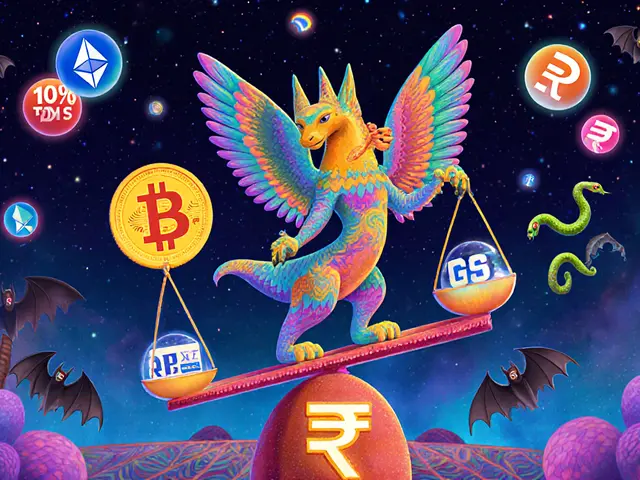Arbitrum Crypto Exchange: What It Is, How It Works, and Where to Trade
When you trade crypto on Arbitrum, a Layer 2 scaling solution built on Ethereum that cuts fees and speeds up transactions. Also known as Arbitrum One, it lets you use apps like decentralized exchanges without paying $50 in gas fees every time you swap. Unlike running everything directly on Ethereum, Arbitrum handles trades off-chain and then bundles them back to Ethereum for security. This means you get Ethereum’s safety with the speed and cost of a modern app.
Most Arbitrum crypto exchanges, decentralized platforms that run on the Arbitrum network to enable fast, low-cost trading are built for users who want to swap tokens like USDC, ETH, or ARB without waiting hours or paying outrageous fees. Popular ones include Uniswap V3 on Arbitrum, SushiSwap, and Camelot. These aren’t traditional exchanges with customer support desks—they’re smart contracts you interact with directly through your wallet. You don’t need to sign up. You just connect, approve, and trade.
Arbitrum isn’t just about trading. It’s part of a bigger shift in how blockchains scale. Ethereum scaling, the process of making Ethereum faster and cheaper by moving work off the main chain is why projects like Arbitrum and Optimism exist. Before these, users had to choose: use Ethereum and pay high fees, or switch to a cheaper chain and lose security. Arbitrum gives you both. It’s why over 60% of all DeFi activity on Layer 2s now happens on Arbitrum.
But not all Arbitrum exchanges are equal. Some have deep liquidity for major tokens. Others are full of risky new coins with no volume. Some charge zero fees. Others take a cut. And while most are non-custodial—meaning you keep your keys—not all are well-audited. You’ll find platforms here that are clean and transparent, like KyberSwap Classic on Arbitrum, and others that feel like ghost towns with no users or updates. The difference isn’t just technical—it’s about trust.
If you’re trading on Arbitrum, you’re likely using tokens built for it: ARB for governance, USDC for stable swaps, or tokens from projects that moved here to avoid Ethereum’s congestion. You might be farming yield, staking, or just swapping ETH for a new meme coin. But whatever you’re doing, you need to know what you’re getting into. Not every DEX on Arbitrum is safe. Not every token has real demand. And not every platform will still be around next year.
This collection of posts gives you real, no-fluff reviews of the exchanges and tokens that live on Arbitrum. You’ll see which ones actually work, which ones are dead, and which ones are hiding risks behind flashy interfaces. You’ll learn how to spot a fake DEX, why some platforms charge nothing but still aren’t worth it, and how to trade smarter without guessing. No hype. No promises. Just what’s real on Arbitrum in 2025.









